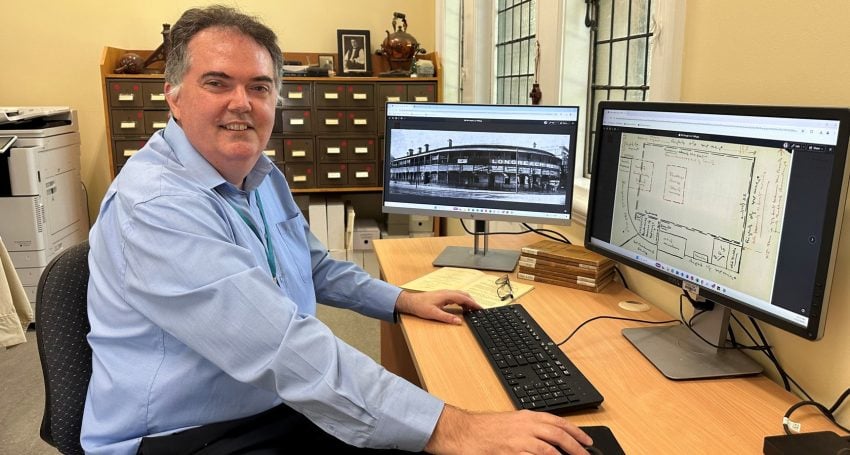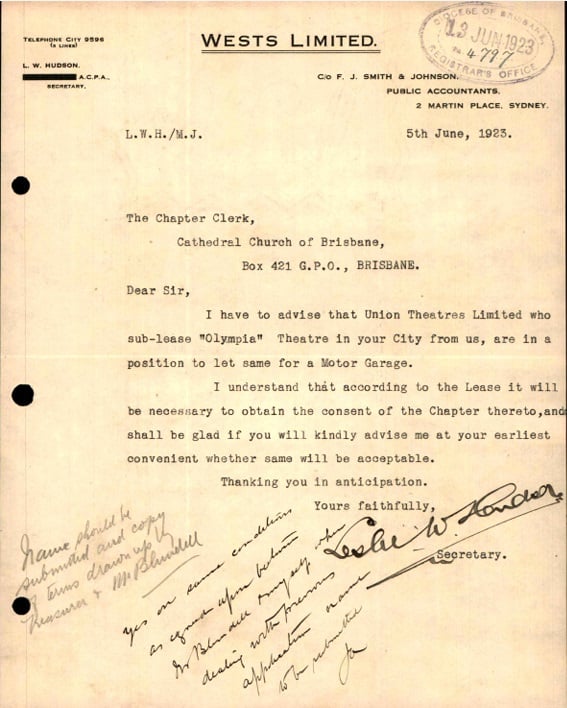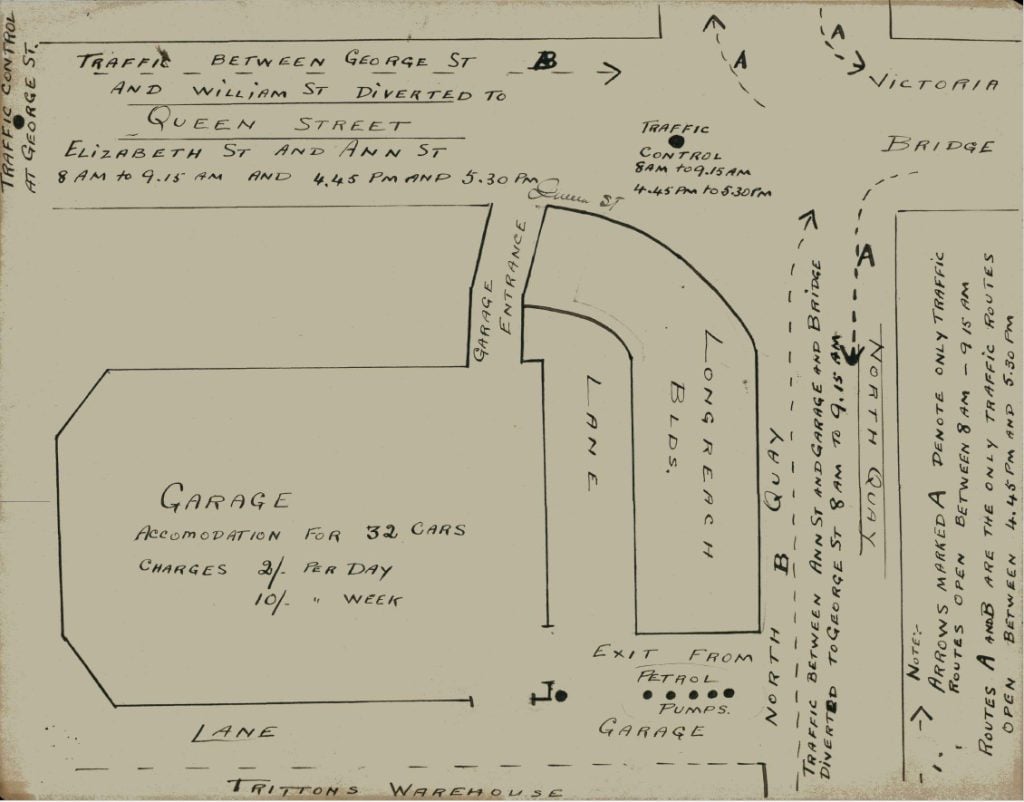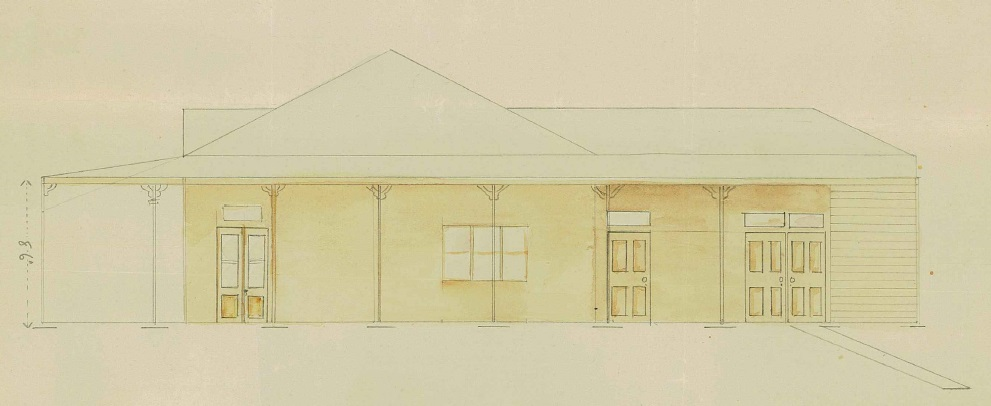From hotel pub to first Australian moving picture theatre to motor garage — digitisation of Church records unlocks forgotten Queensland history
People & History
“Since I last wrote for anglican focus in July 2022 about the Records and Archives Centre’s Digitisation Plan, several rich information sources have been scanned, unearthing a trove of information. The Archives has also received new records that are some of the oldest in Queensland,” says ACSQ archivist Michael Rogers

I continue to be amazed at the rich historical treasures that our Diocese is the custodian of — both for items that have been held long-term by the Records and Archives Centre and items that have been recently transferred to the Centre.
It is often the case that you don’t know what you have until you go digging — and in my case, if the records have been digitised.

Longreach Hotel, circa 1900 (sourced from Queensland State Archives)
Since I last wrote for anglican focus in July 2022 about the Records and Archives Centre’s Digitisation Plan, several rich information sources have been scanned, unearthing a trove of information.
The Archives has also received new records that are some of the oldest in Queensland.

Elevation plan for St Paul’s Church in Ipswich, circa 1855
Recent transfers include plans for the first stage of St Paul’s Church in Ipswich, dated 1855. These plans were in good condition; however, years of unfolding and refolding have left them separated into quarters. The plans were handed over to a private conservator, who put them back together.
Other transfers include handwritten letters donated by the surviving family of The Rev’d Benjamin Glennie. The letters complement the diary (also kept by the Records and Archives Centre) that Glennie kept when he first arrived in the colony of New South Wales.

First page of letter to Benjamin Glennie, dated 13 September 1847
The digitisation of current holdings both improves access to Diocesan information and sheds light on aspects of our past that have been forgotten. The recent digitisation of the Diocesan Registry Correspondence series is a case in point.

Site plan of Old Bishopsbourne, 1885
The correspondence dates from 1895 to 1990, while also including some records dating from 1885 — such as a rough 1885 plan of the (now named) Old Bishopsbourne site in Milton. The series also includes information on bequests, donations, trusts, clergy and parishioners.
Some building information is also included in the series, covering St John’s Cathedral, churches, rectories and halls, as well as private land and offices that our Diocese had title for and that were leased to private companies. West’s Pictures Pty Ltd, the creators of the first dedicated moving picture theatre in Australia – constructed and opened on Brisbane land owned by the Diocese – is an exciting example.

Outline of proposed picture theatre within the Longreach building, 1909
The entrance to the theatre was located on the corner of Queen Street and North Quay, across the road from the Treasury Building. A few years after European colonisation, our Diocese obtained the trusteeship for the land, which included a small carpenter’s shed. The shed was fitted out as a church and became the first Church of St John’s — the second Church of St John’s was constructed in 1854.
Eventually a solid brick building (spanning the corner of Queen Street and along North Quay) was constructed, becoming known as the Longreach Building. It was eventually transferred to the responsibility of the Cathedral Chapter. Initially, it was primarily leased for office space and boarding. Around 1882 the building became known as the Longreach Hotel — by 1889 the number of rooms totalled 34.

Extract from Synod address by Archbishop Donaldson, published in the Diocesan Year Book, 1906
At some point a licence to sell alcoholic beverages was obtained by the lease holder — there is much conjecture as to whether the Diocese was consulted on this matter. Much debate entailed (including at Synod) as to whether the Diocese should own premises where intoxicating liquor was to be sold. In 1908, when the lease for the hotel was due for renewal, the Diocese decided not to renew it and so the hotel part of the building closed. The private office in the building and surrounding workshops on the site continued to operate, although soon after the hotel closed, the Diocese was contacted concerning the majority of the land behind the Longreach building.

Diocesan Registry correspondence from 1909 regarding confectioner’s shop
West’s Pictures, through the services of Cameron Brothers (Auctioneers, Valuators and House, Land and Estate Agents), first enquired in October 1909 as to whether “we may secure a twenty-one-year lease of the [Longreach] property”. There were some concerns regarding the current tenants, including the Confectioner’s shop [Costa] then running in the Longreach building; eventually the theatre was constructed, and an entrance was incorporated into the Queen Street frontage of the Longreach.

Plan of Longreach building and West’s Olympia Picture Theatre, 1910
Although he was heavily involved in the construction of the Cathedral’s first stage, noted architect Robin Dods (1868-1920) also devoted time to the design and construction of the picture hall, which included intricate interior fittings and modern facilities.

Sketch plans of WCs for West’s Olympia Theatre by Robin Dodds, 1910
West’s Olympia Theatre opened with much fanfare on 27 May 1910. Although revolutionary for its time, later theatres were even more intricately designed and technically advanced. West’s closed the theatre in early 1923 — but retained the lease and obtained approval from the Diocese to sublet the property to a motor vehicle garage.

Diocesan Registry correspondence from 1923 regarding the motor garage
The theatre was converted and by early 1924 was operating as a garage (an insurance policy document dated 8 February notes the installation of an underground petrol tank) by Barnes Auto Company. Apart from a brief period during World War II (when the building was used as an air-raid shelter) Barnes Auto was the main lessee for the site until the mid-1950s, although the Diocese sold the building and site to Prudential Assurance Company Ltd in 1948.

Plan submitted as part of lease proposal by Barnes Auto Company, January 1930
I continue to uncover many other stories of our Diocese, including memorial tablets for fallen soldiers.
I hope to showcase more treasures over the coming years and highlight what is perhaps not forgotten history, but is certainly buried and deserves to be brought into the light.

Sketch of proposed rectory for The Parish of Kilcoy, 1912
Author’s note: Despite research I conducted, I was unable to find any information about Turrbal people and the Queen Street site described in this feature piece. If anglican focus readers have information about this, please email the Records and Archives Centre so this can be documented.






